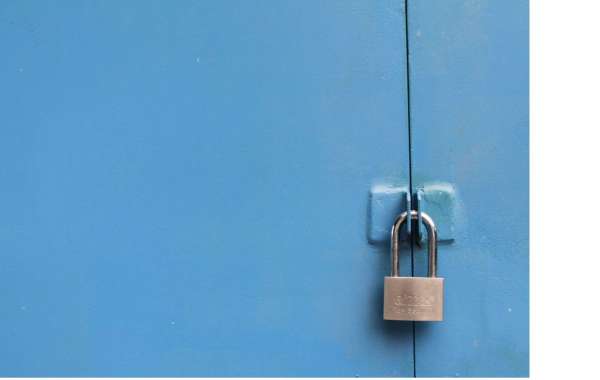When most people think about pelvic floor health, they typically associate it with women. However, pelvic floor issues are just as relevant to men. Whether it’s improving urinary incontinence, enhancing sexual function, or supporting overall core strength, pelvic floor exercises for men can offer significant benefits. If you're looking to improve your pelvic health or explore pelvic floor therapy techniques, this article will provide essential information for your wellness journey.
What Is the Pelvic Floor and Why Is It Important for Men?
The pelvic floor is a group of muscles that form a supportive sling at the base of the pelvis. These muscles are responsible for supporting organs such as the bladder, bowel, and in men, the prostate. A healthy pelvic floor helps with urinary control, bowel function, sexual health, and stability for the spine and pelvis.
Men can face pelvic floor issues at any stage of life, whether due to aging, surgery (like prostate surgery), or chronic conditions such as obesity, diabetes, or chronic coughing. Weak pelvic floor muscles can result in incontinence, erectile dysfunction, pelvic pain, and decreased core stability.
Pelvic Floor Exercises for Men: What Are They?
Pelvic floor exercises, often referred to as Kegel exercises, are designed to strengthen the pelvic floor muscles. For men, strengthening these muscles can address several common health concerns, including:
- Urinary Incontinence: Difficulty controlling urination can affect men, especially after prostate surgery or as they age. Pelvic floor exercises can improve bladder control and reduce the need for pads or frequent bathroom visits.
- Erectile Dysfunction: Research suggests that pelvic floor exercises can improve erectile function by enhancing blood flow to the penis and strengthening the muscles involved in sexual function.
- Prostate Health: Pelvic floor exercises can help men recovering from prostate surgery regain bladder control and improve sexual function.
- Pelvic Pain Relief: Men who experience pelvic pain due to conditions such as prostatitis or pelvic floor dysfunction can find relief through targeted pelvic floor therapy.
How to Perform Pelvic Floor Exercises for Men
Before starting pelvic floor exercises, it’s important to identify the correct muscles. To do this, try stopping urination midstream. The muscles you use to stop the flow of urine are the pelvic floor muscles.
Once you’ve identified the muscles, you can begin performing pelvic floor exercises, also known as Kegels. Here’s a simple guide to get you started:
- Start by contracting the pelvic floor muscles: Tighten the muscles you use to stop urination and hold them for 5 seconds.
- Relax the muscles: Release and relax the muscles completely for 5 seconds.
- Repeat: Perform this exercise for 10 to 15 repetitions, gradually increasing the duration of each contraction as you build strength.
Aim to do these exercises at least three times a day. Over time, you can increase the number of repetitions or duration as your pelvic floor muscles become stronger.
Advanced Pelvic Floor Therapy Techniques for Men
While basic Kegels are effective for most men, some may need advanced pelvic floor therapy techniques to address more specific concerns. A pelvic health specialist or physical therapist trained in pelvic floor therapy can help design an individualized plan that includes advanced exercises, manual therapy, and relaxation techniques.
- Biofeedback: This technique involves using sensors to measure pelvic floor muscle activity. The information provided helps men learn how to properly contract and relax the pelvic floor muscles.
- Pelvic Floor Trigger Point Release: Sometimes pelvic floor dysfunction is caused by tight, tense muscles in the pelvic region. A physical therapist can use manual therapy techniques to release trigger points in the pelvic floor muscles, promoting relaxation and improved function.
- Core Strengthening: Since the pelvic floor works in conjunction with other core muscles, strengthening the abdominal, back, and hip muscles can help support the pelvic floor and improve overall stability. Exercises like planks, bridges, and leg raises are often incorporated into pelvic floor therapy programs.
- Posture Correction: Poor posture, especially from prolonged sitting, can contribute to pelvic floor dysfunction. A physical therapist may guide you through exercises and stretching routines that improve posture and pelvic alignment.
- Breathing Techniques: Proper breathing techniques, such as diaphragmatic breathing, can help relax the pelvic floor and improve its function. Learning to coordinate breath with pelvic floor contractions can enhance the effectiveness of your exercises.
The Role of a Pelvic Floor Therapist
If you experience difficulty identifying or activating your pelvic floor muscles, or if your pelvic floor issues are causing significant discomfort or dysfunction, seeking help from a qualified pelvic floor therapist can make a huge difference. A pelvic health professional can provide personalized guidance, ensuring that you’re performing exercises correctly and effectively. They can also design a customized therapy program that addresses your specific needs.
In addition to pelvic floor exercises, they may incorporate other modalities like electrical stimulation or manual therapy to address underlying causes of pelvic pain, incontinence, or other issues.
Benefits of Pelvic Floor Therapy for Men
- Improved Bladder Control: Strengthening the pelvic floor muscles helps control urinary urges and can reduce the frequency of accidents.
- Enhanced Sexual Health: Strong pelvic muscles can lead to improved erectile function, better orgasms, and increased sexual satisfaction.
- Pain Relief: Pelvic floor therapy can address chronic pelvic pain and reduce tension in the pelvic region.
- Increased Core Stability: A strong pelvic floor supports your core, improving posture, balance, and overall functional movement.
Conclusion
Pelvic floor exercises for men are a powerful tool for improving health and well-being. Whether you’re dealing with incontinence, erectile dysfunction, or just want to maintain pelvic health as you age, incorporating these exercises into your routine can provide substantial benefits. If you need more advanced therapy techniques, consulting a pelvic floor therapist can help you achieve better outcomes and improve your quality of life.







